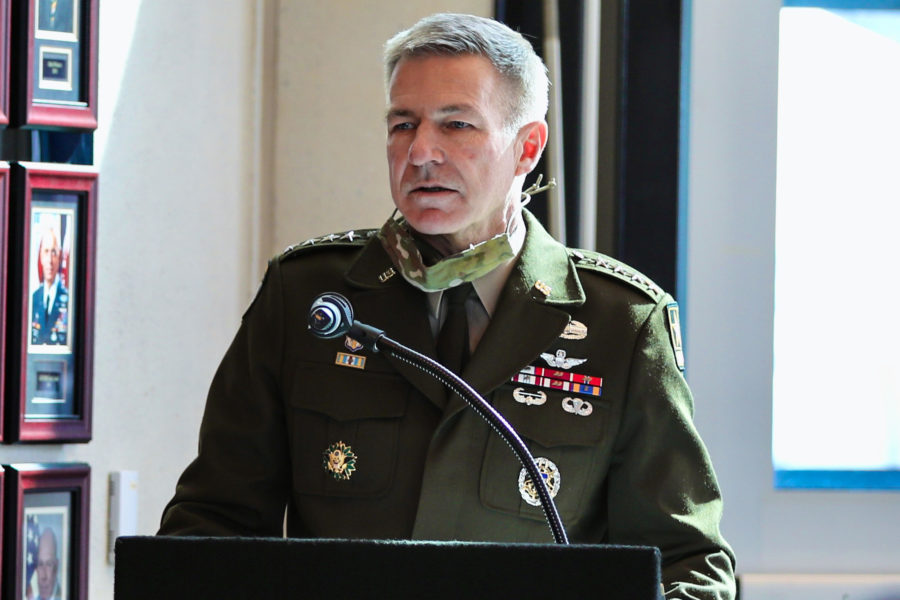The Army’s push to develop hypersonic weapons is an effort to present adversaries with multiple dilemmas and take on the Suppression of Enemy Air Defenses role as well as deep strike, service Chief of Staff Gen. James C. McConville said March 11.
The Army’s efforts at “long range precision effects and long-range precision fires” are meant to “provide commanders in the global campaign with multiple options,” he told reporters during a virtual Defense Writers Group. While the Navy and Air Force have “incredible capabilities” in deep strike, “we’re all together in the Joint Force.”
An organization to employ long-range fires is already taking shape, and McConville said two such task forces will be deployed in the Indo-Pacific and one in Europe.
He said hypersonic missiles could destroy enemy air defenses and pave the way for Air Force and Navy aircraft to penetrate enemy air defenses.
“If someone says, ‘Hey, this is something new for the Army,’” it is not, he said, claiming that AH-64 Apache helicopters in the Gulf War 30 years ago “took out those two air defense systems that opened up a gap and allowed the Air Force to go on and … do the incredible things they could” in Iraq. He did not mention Air Force cruise missiles and stealthy F-117s penetrating Iraqi air defenses in the opening hours of that conflict, or conducting SEAD strikes throughout the six weeks of the air campaign.
“We wouldn’t do [that] today, but we might do it differently,” McConville said. But the Army taking on the SEAD mission “is one of those concepts we’re going to need for the future, … and we’re going to do it from maybe a strategic range, [to] put more challenges on potential competitors.”
The Army is also looking to use long-range fires to “set up our own anti–access, area denial capability … [to] put pressure on those developing a sea-based capability.”
Asked why land-based deep strike could be better than air-based, he said, “The value of land-based is it’s 24/7. So, it’s always there. It’s tough to sink some of the islands [in the Pacific Ocean], if you have the ability” to operate from such a location, given mobility capability.
Army deep strike is “an option that may, in the future, enable both air and maritime maneuver, which is something different than we’ve done in the past, although you could argue we did that in Desert Storm.”
McConville said the Army is building a “multi-domain task force,” the first of which is being experimented with in the Indo-Pacific theater now.
“We’re not ready to say where it’s actually going to be stationed,” he said, but he noted that Secretary of Defense Lloyd J. Austin III is “in the Pacific now” and “a lot of diplomacy is going on.”
The task force will provide “long-range precision effects and long-range precision fires, and we are building it while we’re flying it, so to speak.” In addition to hypersonic, mid-range, and “precision strike” missiles, it will also possibly include air defense systems, McConville said. The task force has intelligence, information operations, cyber, electronic warfare, and space capabilities, he noted.
Air Force Chief of Staff Gen. Charles Q. Brown Jr. called for a roles and missions review during his confirmation process, saying there’s no better time to review exactly what jobs the service should manage than in the initial years of a National Defense Strategy, the infancy of the Space Force, and in the midst of a global pandemic.
“Now is the time to reconsider our approaches to air power, and if confirmed, I am ready to participate in a meaningful discourse to rethink prior assumptions and take steps towards consolidating and reducing redundancies,” Brown told lawmakers in May 2020.
